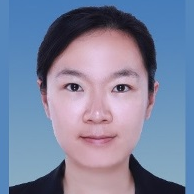Optical Fiber Communications: Innovations and Challenges
A special issue of Electronics (ISSN 2079-9292). This special issue belongs to the section "Optoelectronics".
Deadline for manuscript submissions: closed (31 March 2023) | Viewed by 7702
Special Issue Editors
Interests: specialty fibers and components; fiber amplifiers; fiber lasers; optical sensing
Interests: silicon photonics chips and optical computing; communication systems
Interests: passive and active fiber design; few-mode rare-earth (co-)doped fiber amplifiers (FM-REDFAs); optical fiber transmission; optical fiber sensors; beam mode decomposition
Special Issues, Collections and Topics in MDPI journals
Special Issue Information
Dear Colleagues,
The great advance in various emerging Internet-related technologies has led to a surge in network traffic. Due to the ever-increasing demand for higher data rates, the data transmission volume is rising exponentially, while the transmission capacity of current standard single-mode optical fiber communication system is close to the Shannon limit. The effective utilization of current bandwidth and the expansion of bandwidth resources, have become the most important focus for further improving the transmission capacity of optical fiber communication.
High-order modulation improves spectral efficiency, space division multiplexing multiplies capacity, optical fibers with novel materials and structures broaden the available bandwidth, and the successful application of these new technologies can not be separated from the comprehensive support of theories, algorithms, components, and devices.
The main aim of this Special Issue is to present the latest research achievements in the field of optical fiber communications, including theory, design, and experimental applications of multiplexing, modulation, digital signal processing, as well as special optical fibers, optical components and devices, photoelectric integration, and so forth.
The topics of interest include, but are not limited to:
- Space division multiplexing (SDM);
- Specialty fibers;
- Modulation technology;
- Optical passive devices;
- Optical active devices;
- Photonic/optoelectronic integration.
Dr. Jingjing Zheng
Dr. Bing Bai
Dr. Jianshuai Wang
Guest Editors
Manuscript Submission Information
Manuscripts should be submitted online at www.mdpi.com by registering and logging in to this website. Once you are registered, click here to go to the submission form. Manuscripts can be submitted until the deadline. All submissions that pass pre-check are peer-reviewed. Accepted papers will be published continuously in the journal (as soon as accepted) and will be listed together on the special issue website. Research articles, review articles as well as short communications are invited. For planned papers, a title and short abstract (about 100 words) can be sent to the Editorial Office for announcement on this website.
Submitted manuscripts should not have been published previously, nor be under consideration for publication elsewhere (except conference proceedings papers). All manuscripts are thoroughly refereed through a single-blind peer-review process. A guide for authors and other relevant information for submission of manuscripts is available on the Instructions for Authors page. Electronics is an international peer-reviewed open access semimonthly journal published by MDPI.
Please visit the Instructions for Authors page before submitting a manuscript. The Article Processing Charge (APC) for publication in this open access journal is 2400 CHF (Swiss Francs). Submitted papers should be well formatted and use good English. Authors may use MDPI's English editing service prior to publication or during author revisions.
Keywords
- space division multiplexing (SDM)
- specialty fibers
- modulation technology
- optical passive devices
- optical active devices
- photonic/optoelectronic integration






